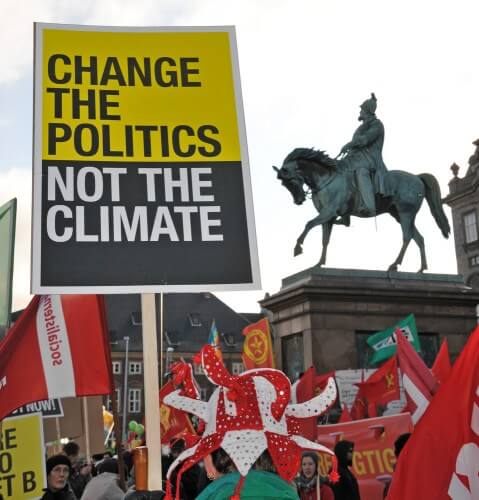Ido Livan's research on the coverage of the climate debates by international news agencies was presented at the fifth science in communication conference held this week at Tel Aviv University

Not long ago we reported on the claim of an environmental reporter who was fired from the Reuters news agency because his new director, who is a climate denier, prevented the publication of his reports on the impact of global warming (fight warming by taking over the media reporting on it. Ido Livan presented a study he conducted regarding the nature of the news agencies' reports of the global climate conferences. The news agencies are the main source of information from these conferences and it turns out that it is biased in various ways. Here is the summary of Ido's lecture at the fifth science communication conference. Courtesy of the author
By: Ido Livan
Through media outlets around the world that subscribe to their services, a very limited number of international news agencies actually control the global flow of international news - in the newspapers of the early 21s as in the news sites of the XNUMXst century.
However, the question, whether the scope of their activity that embraces the world is supported by a discourse that represents a global worldview, has so far remained open.
By focusing on climate change as a case of a global crisis whose causes, like its consequences, are inherently cross-border, and in particular in the international news agencies' coverage of the political process designed to deal with this crisis, this study seeks to examine how and to what extent the journalistic discourse reflects in the reports of international news agencies The current reality in a world of increasing interdependence and interrelationships.
A number of previous analyzes revealed the central share occupied by materials from news agencies in the coverage of climate change in the world's media, and especially in developing countries. Therefore, in response to recent calls to examine how international news agencies themselves cover the issue of climate change, the study presented here is actually the first to do so.
The inspiration for the methodology in this study comes from growing voices calling for journalism scholars to adopt a global perspective. Accordingly, the study is based on the concept of Global Journalism (Berglez, 2008), which offers an analysis framework for the examination of news content through the categories of space, power and identity, both in light of the choice of coverage topics ("the horizontal axis") and in light of the journalistic interpretation they actually receive (" the vertical axis").
To this end, this work focuses on the UN climate change conference held at the end of 2011 in Durban, South Africa, and uses discourse analysis to compare the coverage in three news agencies: Associated Press, Agence France Presse and Xinhua. The three agencies are among the world's main providers of international news content. They also represent the three leading geopolitical powers in the world today (the United States, the European Union, and China, respectively), and accordingly reflect, not only distinct journalistic traditions, but also a strong national commitment.
On the same topic on the science website:
- The sea will flood the coastal cities - in Tel Aviv the water may reach as far as Ibn Gvirol St
- The unexpected victims of global warming
The findings from this study show that, even if things are expressed differently in each of the agencies, all three gave representation to a number of supranational collective identities - at the continental level (European Union, Africa), at the religious level, and at the level of global society - and thus actually illustrated the urgency of combining arms globally in order to deal with climate change.
On the other hand, the representations of forces in the three agencies demonstrate the hold of the logic of the nation state, similar to the diagnoses of many of the previous studies that examined foreign news coverage. In the current case, this view has helped create a realpolitik presentation in which a limited number of superpowers (ie, the United States, China and the European Union in the middle) steer the world system almost without regard for other countries participating in the talks.
In conclusion, if news about the world, as claimed by Walter Lippmann (Lippmann, 1921), paints the "pictures in our heads", then this dissonant view - the desired versus the common - as it is embodied in the coverage of the three news agencies, actually expresses the structural duality of themselves, the tension between the national and the global, and accordingly, it must be assumed, affects the public discourse around the issue of climate change and around many other issues.
Ido Livan is an independent journalist who mainly covers foreign news and environmental issues for media outlets in Israel and around the world. The above research was carried out as part of a master's thesis at the University of Amsterdam submitted in the summer of 2012 as part of the Erasmus Mundus Masters: Journalism, Media and Globalization program at the University of Aarhus, Denmark and the University of Amsterdam, the Netherlands. Email: ido@idoliven.com

3 תגובות
In the lecture he gave several examples, for example of interviews with personalities from the three regions to which the agencies belong (Europe - mainly France if I understood correctly, China and the USA)
This is Seinfeld talk of the highest order.
General talks around the topic
in which the writer tries to prove to the reader
that he knows all the "buzz words"
without contributing anything new.
What specific biases do news agencies have?
I would expect a description of a trend, giving some examples
and analyzing the differences between the agencies
And explain how these differences are consistent with the powerful interests of each of the entities.
I could not see any of this in the article.